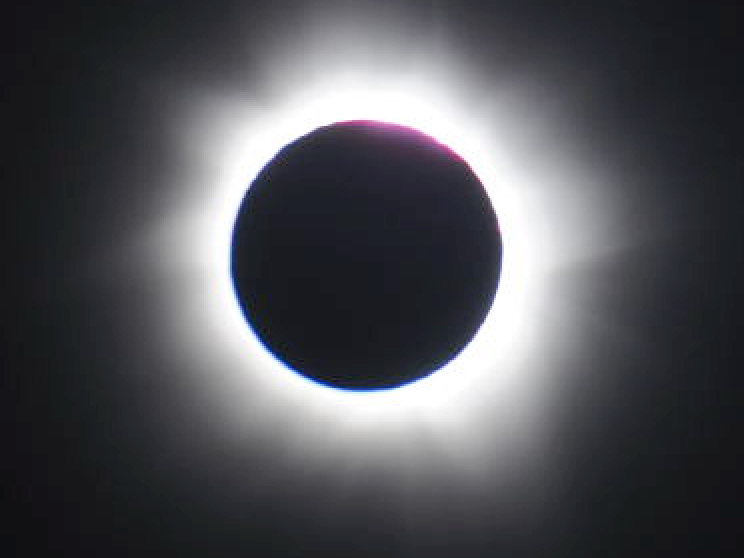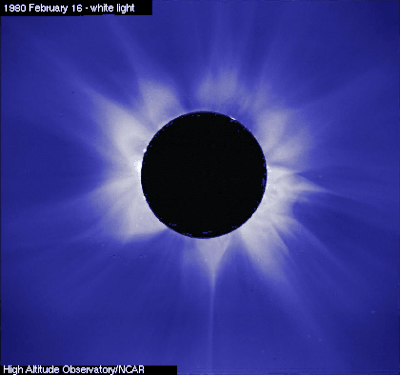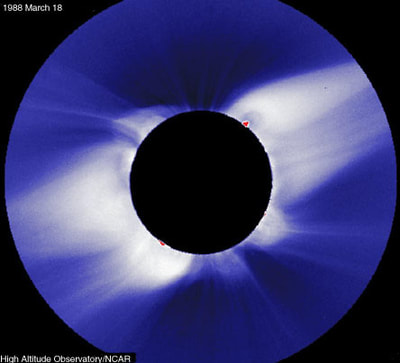A busy month for Observatoire Solaire.
We are delighted to announce that the winner of our competition is Ilias Sellountos. He, along with several others, correctly identified that the location of the marriage of François Félix Tisserand’s parents was the church in the village of Gerland. A signed copy of our book: François Félix Tisserand – forgotten genius of celestial mechanics is now with Ilias.
Thank you for everyone who entered our first competition. Keep a watch out for our next competition, which will be announced in May!
Closer to home, on the 21st and the 23rd of March we gave a talk on astrophysics and asteroids to several of the year-groups at both St Joseph’s college, Dumfries, and Dumfries High school. We had some very well-informed discussions with the students, together with some most interesting questions…when the world will end…do white holes exist…how would we survive if an asteroid hit the Earth…what is dark matter and dark energy…is space debris a hazard to spacecraft. Great days for all involved!
If your group or institution would like us to visit your place to do similar, please get in contact with us.
Very much looking forward to this one! We are currently finalising our spring field trip – more will be published on our face-book page very shortly.
And, as you may have seen, Observatoire Solaire is on the move. We expect to be able to make an announcement on this within the next week. Again, this will be first communicated via our face-book and LinkedIn presences.
And just to foretell a busy April, we will also be rebranding with a new logo!
In this month’s blog below we look at the outer atmosphere of the Sun, the Corona
Le mois de mars a été bien chargé pour l’Observatoire Solaire
D’abord nous sommes heureux d’annoncer le gagnant de notre concours, Ilias Sellountos. Plusieurs personnes ont répondu correctement à la question, où a eu lieu le mariage des parents de Félix Tisserand? La réponse est’ l’église dans le village de Gerland’ Ilias recevra un exemplaire de notre livre François Félix Tisserand – forgotten genius of celestial mechanics
Merci à tous ceux qui ont participé; le prochain concours sera annoncé au mois de mai.
Le 21 et le 23 mars nous avons donné une conférence à St Joseph’s college, Dumfries et à Dumfries High School sur l’astrophysiqe et les astéroïdes. Les étudiants l’ont beaucoup apprécié et ils ont posé des questions concernant, par exemple: la fin du monde, les trous blancs, la matière noire. l’énergie noire et le risque que posent les débris présent dans l’espace pour les vaisseaux spatiaux.
(N’hésitez pas à nous contacter si vous souhaitez plus de renseignements sur nos activités pédagogiques).
Nous sommes en train de faire des projets pour notre sortie sur le terrain. Plus de détails seront bientôt publiés sur notre page facebook.
https://www.facebook.com/Observatoire-Solaire-1103852373050680/
Observatoire Solaire va bientôt déménager; les détails seront annoncés sur facebook et Linkedin dans une semaine.
Et finalement, en avril nous allons présenter notre nouveau logo!
Mais d’abord prenez le temps de lire notre blog de mars qui concerne l’atmosphère extérieure du Soleil: la couronne. .
The outermost visible layer of the Sun’s atmosphere is called the corona (from the Latin word for ‘crown’). This historically was only observable during times of total solar eclipse but with the invention of the coronagraph, which emulates a solar eclipse, it can now be readily observed at any modern professional observatory. Satellite and multi-wavelength observations have also brought key insights into the form and nature of the corona.
Observed using a Coronagraph.
(NASA High Altitude Observatory, Boulder)
Spectroscopic observations of the 1869 solar eclipse, by Charles Young (b.1834 d.1908) and William Harkness (b.1837 d.1903), detected an emission line at 5303A (Angstroms) which could not be explained or related to any known element. It was given the designation coronium and was postulated to be a new hitherto undiscovered element. It was not until 1939 that the Swedish physicist Bengt Edlen (b.1906 d.1993) provided an explanation for what this line represented. This is an emission line of a highly ionised form of Iron. Fe13+, i.e. atomic iron with 13 of its 16 electrons missing, produces this line during electron transitions (electrons ‘moving’ from one energy shell to another). This produces a strong emission line in the green part of the spectrum. Another prominent red line, at wavelength 6375A is produced by Fe+9. You may come across the terminology FeX for Fe+9 and FeXIV for Fe13+ within the astronomical literature.
The significance of these, and other lines, is that such highly ionised forms of a heavy element such as iron can only exist within very high temperature environments; typically ~2 x 10**6 Kelvin. The temperature gradient of the corona is, very approximately: 1 million Kelvin at 10**4 km above the photosphere; 1.5 million Kelvin at a height of 3 x 10**4 km; and circa 2 million Kelvin at a height of 7.5 x 10**4 km. However, these are highly variable and depend upon solar cycle and whether the region being considered is active or quiescent. There is certainly a height based gradient but equally valid would be to describe the coronal temperature by the inequality: 10**5 Kelvin ≤ T ≤ 3.5 x 10**6 Kelvin.
The density of the corona however is extremely low. The chromosphere (the layer of the Sun immediately above the photosphere) density is typically 1×10**−10 kg/m**3 at its outer regions with the inner corona at, in like units, ~5×10**−12 kg/m**3. However, to describe such rarefied plasma and atmospheres it is more usual to define density in terms of ‘particle-density’, i.e. the number of particles (normally taken to be hydrogen atoms or hydrogen nuclei (i.e. protons) per unit volume; often cm**3). In terms of particle densities, the chromosphere typically has a mean density of 10**14 particles per cm**3. At a height of 10**5 km above the photosphere, the particle density of the corona is typically 10**8 cm**-3; i.e. a million times less dense.
The high temperature of the corona means that throughout the region it is an area of fully ionised hydrogen and helium, with most of the area’s heavier elements at least partially ionised. Because of this, it is also an area of very high electrical conductivity and thus, high magnetic flux conductivity. The streamers and shape of the atmosphere are heavily correlated with the solar magnetic field, as evidenced by the variations seen during eclipses at different phases within the cycle.
The unexpected temperature profile is currently unsatisfactorily unexplained and a number of differing mechanisms have been considered. Magnetic effects clearly have a role to play. Pressure waves, nano-flares, magnetic ‘carpet’, electrical conduction, Alfven waves and magnetic reconnection are all potential and real effects that can transfer energy. Pressure waves appear to be least likely to be the dominant effect, and magnetic reconnection (magnetic field separation and transfer) together with Alfven waves look to be the most prominent sources. However, no model has yet been determined that can explain the observed characteristics. In future blogs we will look at one of the ‘consequences’ for the extraordinarily high temperature, namely the solar wind.
Further reading
(In ascending level of technical complexity)
[1] Stars and their Spectra. James Kaler. CUP. 2011
(Sorry about the amazon link - it’s currently out of print at CUP)
[2] The Sun – Shining light on the Solar System. Neil Taylor. 2017
As mentioned in our local news, in April we will be on our spring field trip. Next month’s blog will feature our expedition and findings and will be issued on Saturday 28th April.




